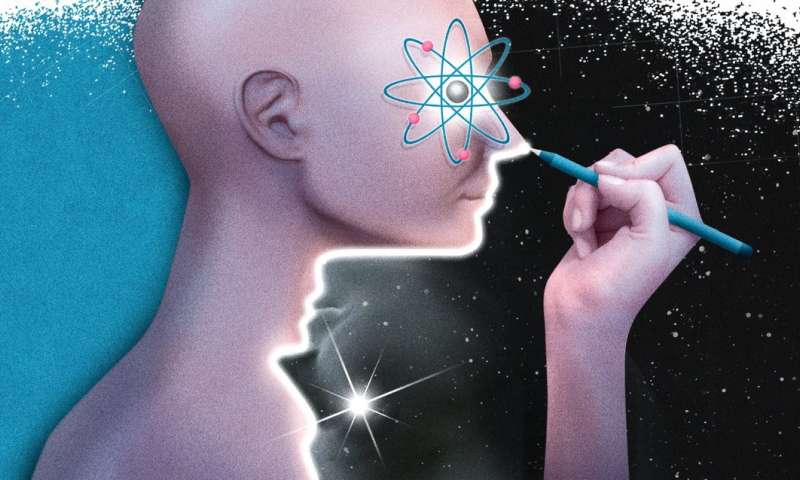
The theory of quantum mechanics is well supported by experiments. Now, however, a thought experiment by ETH physicists yields unexpected contradictions. These findings raise some fundamental questions—and they’re polarising experts.
There is likely no other scientific theory that is as well supported as quantum mechanics. For nearly 100 years now, it has repeatedly been confirmed with highly precise experiments, yet physicists still aren’t entirely happy. Although quantum mechanics describes events at the microscopic level very accurately, it comes up against its limits with larger objects—especially objects for which the force of gravity plays a role. Quantum mechanics can’t describe the behaviour of planets, for instance, which remains the domain of the Theory of General Relativity. This theory, in turn, can’t correctly describe small-scale processes. Many physicists therefore dream of combining quantum mechanics with relativity to form a coherent worldview.
Toward larger objects
Though both theories describe the physical processes in their domains very accurately, they differ greatly. How can they be combined? One possibility is to conduct quantum physics experiments with increasingly larger objects in the hope that discrepancies will eventually appear that point to possible solutions. But physicists must work within tight constraints. The famous double-slit experiment, for instance, which can be used to show that solid particles simultaneously behave like waves, can’t be performed with everyday objects.
Thought experiments, on the other hand, can be used to transcend the boundaries of the macroscopic world. Renato Renner, professor of theoretical physics, and his former doctoral student Daniela Frauchiger have conducted such a thought experiment in a publication in Nature Communications. Roughly speaking, in their thought experiment, the two consider a hypothetical physicist examining a quantum mechanical object and then use quantum mechanics to calculate what that physicist will observe. According to our current worldview, this indirect observation should yield the same result as direct observation, yet the pair’s calculations show that this is not the case. The prediction as to what the physicist will observe is exactly the opposite of what would be measured directly, creating a paradoxical situation.
No simple solutions
Although the thought experiment is only now being officially published in a scientific journal, it has already become a topic of discussion among experts. As the publication process was repeatedly delayed, other publications are already addressing the findings—itself a paradoxical situation, Renner notes.
The most common initial reaction of his colleagues in the field is to question the calculations, Renner says, but so far, no one has managed to disprove them. One reviewer conceded that he had meanwhile made five attempts to find an error in the calculations—without success. Other colleagues presented concrete explanations as to how the paradox can be resolved. Upon closer inspection, though, they always turned out to be ad hoc solutions that don’t actually fix the problem.
Perplexing conclusions
Renner finds it remarkable that the issue evidently polarises people. He was surprised to note that some of his colleagues reacted very emotionally to his findings—probably due to the fact that the two obvious conclusions from Renner’s and Frauchiger’s findings are equally perplexing. The one explanation is that quantum mechanics is apparently not, as was previously thought, universally applicable and thus can’t be applied to large objects. But how is it possible for a theory to be inconsistent when it has repeatedly been so clearly confirmed by experiments? The other explanation is that physics, like politics, suffers from a lack of clear facts, and that there are other possibilities besides what we deem to be true.
Renner has difficulties with both of these interpretations. He rather believes that the paradox will be resolved in some other way: “When we look back at history, at moments like this, the solution often came from an unexpected direction,” he explains. The Theory of General Relativity, for instance, which solved contradictions in Newtonian physics, is based on the realisation that the concept of time as it was commonly understood back then was wrong.
“Our job now is to examine whether our thought experiment assumes things that shouldn’t be assumed in that form,” Renner says. “And who knows, perhaps we will even have to revise our concept of space and time once again.” For Renner, that would definitely be an appealing option: “It’s only when we fundamentally rethink existing theories that we gain deeper insights into how nature really works.”